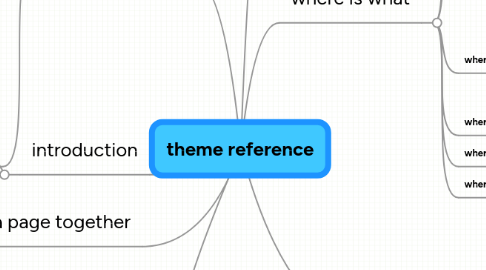
1. building blocks
1.1. overview
1.2. skin
1.2.1. skin layers, templates & scripts
1.2.2. customize using order of precedence
1.2.3. making & naming your own skin
1.2.4. where to find what you need
1.3. components
1.3.1. component wiring & ZCML
1.3.2. viewlets, portlets & other components
1.3.3. interfaces and why they matter
1.3.4. make your own / customize
1.3.5. making components theme specific
1.3.6. deploying components
1.3.7. Python classes
1.3.8. where to find what you need
1.4. configuration
1.4.1. profiles
1.4.2. generic setup XML
1.4.3. generic setup tool
1.4.4. where to find what you need
2. tools
2.1. editing tools
2.2. debug modes
2.3. making your own theme product
3. putting a page together
3.1. content to template
3.2. templates to page
3.3. style sheets and JavaScript to page
3.4. other information about your site
4. introduction
4.1. overview
4.2. what's a Plone theme?
5. where is what
5.1. where is what on the page?
5.1.1. css elements
5.1.2. page elements
5.2. what are the bits in my theme product?
5.2.1. skins
5.2.2. configuration
5.2.3. components
5.2.4. theme installation files
5.2.5. egg installation files
5.3. where are default Plone theme files?
5.3.1. skins
5.3.2. configuration
5.3.3. components
5.4. where is my zope instance?
5.5. where is the products location?
5.6. where is the eggs location?
6. elements
6.1. viewlet
6.1.1. anatomy
6.1.2. move, remove or hide
6.1.3. override or create new
6.2. portlet
6.2.1. anatomy
6.2.2. move, remove, hide
6.2.3. override
6.3. viewlet manager
6.3.1. anatomy
6.3.2. move, remove or hide
6.3.3. override or create new
6.4. portlet manager
6.4.1. anatomy
6.4.2. move, remove
6.4.3. hide
6.4.4. create new
